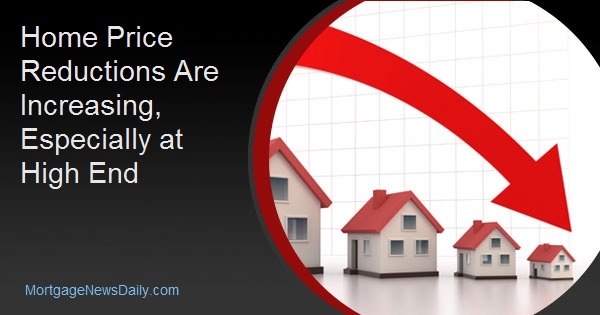Recent research from Trulia shows home price reductions are increasing. The share of homes for sale that have had at least one price cut since being listed is the highest since 2014. This, the company says, is more evidence that the market may finally be tilting in homebuyers favor, but the benefits are certainly not evident across the board, or maybe even where they are most needed.
During the first part of this year the share of listings with a price changes stayed much as it was in 2017, but then shot up in July and August. When this is coupled with the slowdown in home price growth that has been noted in most indices, and inventories that are finally creeping up, the increase in price cuts, according to Trulia, could be a critical third confirmation that things may finally be shifting in buyers' favor.
Trulia says that after that steady start at the beginning of the year, the percentage of listings nationwide that had seen one or more downward revisions in the listing price rose to 17.2 percent in August, the highest rate since the August 2014 share of 17.3 percent. In August 2017 the share was 16.7 percent and that share rose year-over-year in 63 of the 100 largest metros.
Not surprisingly, after seeing how price increases have slowed in some of the areas where they had previously been supercharged like San Jose and Seattle, there was a strong correlation in 79 of the metros between how expensive a neighborhood is and the proportion of listings with at least one price cut over the past year. It is homes in pricier neighborhoods which have had their listing prices slashed more often. Buyers seeking homes in more affordable areas may still have a harder time finding a bargain.
Trulia found that in the above named metros, there was a dramatic increase in the share of price cuts year-over-year. In San Jose, where prices were up 21.5 percent on an annual basis, the percentage of reduced price listings rose from 7.6 percent in August of 2017 to 15.5 percent a year later. In Seattle, where Case-Shiller has reported double digit annual increases for several years, the appreciation rate has slowed to 8.9 percent per Trulia and the percentage of price reductions increased from 12.0 percent last August to 20.0 percent this year.
A few other areas where the share of reductions has risen significantly are Las Vegas, up from 12.6 percent to 20.8 percent, Anaheim/Santa Ana, from 15.8 to 21.6 percent, and Oakland, from 9.5 to 13.6 percent. Outside of the coasts, however there are a lot of areas where price reductions have declined; Raleigh, St. Louis, Pittsburgh, Wichita all saw higher rates in 2017 than this year.
The correlation between the price tier and the frequency of reductions isn't just a metro level phenomenon. Trulia found it within areas as well. For example, Raleigh's more expensive Glenwood and Five Points Neighborhoods, where median home values are currently $676,500 and $519,400, respectively (compared to a metro-wide median of $258,692), have seen 18.9 percent and 16.7 percent of their listings go through at least one price cut over the past year. Meanwhile, in the less expensive neighborhoods of South Raleigh and Southeast Raleigh the respective figures were 5.8 and 6.7 percent. In Camden, New Jersey it's a similar story: 21.5 percent of listings in Springdale, the city's most expensive neighborhood, saw a cut; in Bergen Square, among the city's least expensive areas the percentage was 8.6 percent.
Trulia suggests that diligent buyers take some time traversing their city to find neighborhoods with more bargains. In Atlanta as a whole, 12.1 percent of all listings had at least one price reduction during the year-ended August 2018. But in the Bankhead neighborhood just northwest of downtown there was not a single listing with a price reduction over the same period, compared to more than half (51.7 percent) of listings in the Fernleaf neighborhood. - the highest such share of any neighborhood nationwide. The company says this type of neighborhood-to-neighborhood variation is common.
While prices are being cut, most are not of fire sale level. The median reduction across the 12 months ending in August was 2.6 percent. At the beginning of the recovery, 2011-2012 the median was 4 percent. The median percent decrease of a price reduction today is less than the median price reduction at the outset of the recovery in 97 of the 100 largest metros analyzed.
Finally, there's one last catch for buyers examining price changes: Prices don't always have to come down, and in fact, price hikes are also somewhat more common among listings than they used to be. During the year ending this August, 15.9 percent of all listings nationwide had a price change of any kind - 88 percent of which were reductions (meaning, presumably, that 12 percent had their price nudged upward to some degree). In 2012, only 13.7 percent of listings had any kind of price change, and 93.2 percent of those were reductions.







